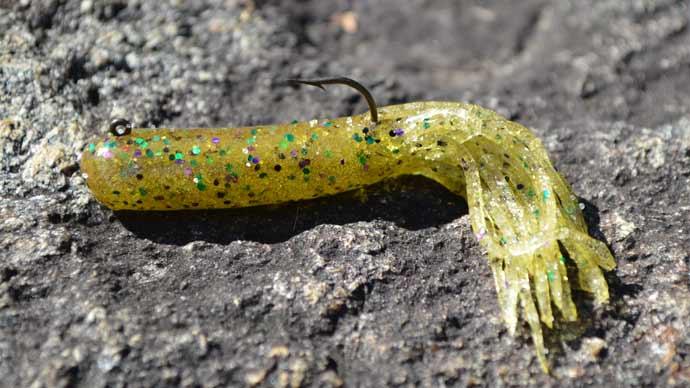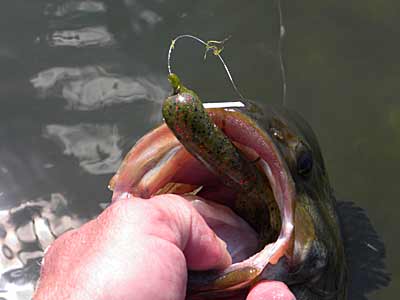
During the spring, two things go together, bass hitting the shallows and a tube bait. It all started many years ago when the Garland brothers released the first tube bait, the Gitzit. After that, the tube vaulted to become a staple for all bass fishermen every spring. So when fishing early in the season for bass, you need to have a tube tied on the end of your line and ready to go.
Let’s look at tube fishing tactics for early Springtime bass and give you a few pointers on how you can successfully put more bass in your boat.
Looking at the tube, it has stayed the same for many years. Over time, some bait companies have tried to dress it up a little, but the tube itself has not changed. That alone is a testament to how well a tube works and catches bass. However, one thing has changed through these years: how we are rigging and presenting tubes.
The first tube came in a package of 4 equipped with a jig head inserted inside the tube. What made the tube bait such a success when the bass were spawning was how it would circle in the water above the bass as it was falling. This action drove the bass crazy because most other baits fall out of sight and don't challenge the bass on a free fall. But the tube stays the course many times, making the bass come up to defend the nest on which they were sitting.
Different Rigs, Different Tube Action
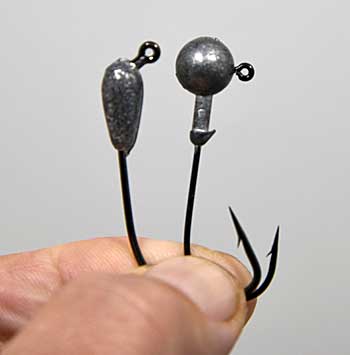
The key to giving different actions comes down to the angle of the jig eye that you're using. If your jig head has a 90-degree eye, the tube will fall in a tight circle when fished on a slackline. That is key if you want your bait to fall above a bass sitting on a bed.
Make your cast and feed the dropping tube some line as it falls. It helps to be a line watcher to detect any strikes you don't feel. You'll see your line start to move away in many cases. If this happens, take up slack and set the hook. When bass sit on the beds, this is the tube rigging of choice.
Suppose the bass haven't moved into the shallows and are holding out deeper, waiting for the waters to warm. I'll take a 60-degree eye jig head, insert it inside my tube, and start to cover water. This rigging gives my tube a more gliding action when it falls on a slackline and allows me to cover water faster in my search for biting bass.
When picking jig heads, make sure that you throw the lightest weight that you can get by with. To get the natural action out of your tube, throw a 1/16oz to 1/8oz head. The more weight you add, the more gliding action you'll take away from your tube.
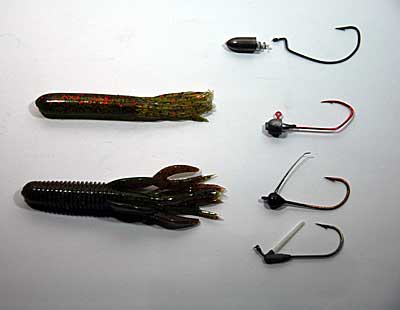
Another rig that I want to talk about is when the bass start to hit the shallow areas, they will be on the hunt for crawfish. The first bass coming into the shallows will often target crawfish starting to become active again. Bass will be drawn to this food source coming back into play again.
You can't imitate a better crawfish presentation in these situations than a tube rigged onto a shaky head jig. The tube stands up more when rigged this way, mimicking a defensive crawfish's stance. I feel this rigging triggers more strikes overall, making it my rigging of choice for this presentation.
I fish my jig/tubes presentation on a 7-foot medium-action Denali Lithium rod with a Lew’s size 20 spinning reel. I spool these reels with 12lb Sunline Asegai braid adding a 4ft section of 8lb or 10lb Sunline Maboroshi fluorocarbon as my leader choice.
Texas Rigged Tubes
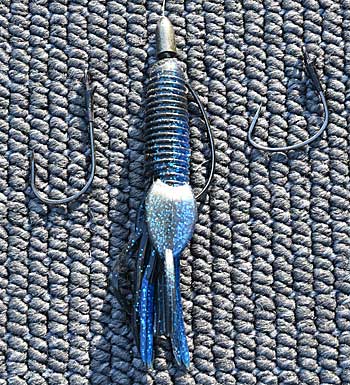
The next tube rigging I use during the early season is a Texas rigged tube, which can be pitched next to or into critical cover situations or fishing deeper water weed areas. This presentation excels at the start of the season when the bass are sitting in deeper water weeds just starting to think about heading towards the shallows.
I'll fish this presentation on a 7-foot Denali Lithium Pro baitcaster setup teamed with a reel that is spooled with 16lb Sunline Sniper FC line. I fish my Texas rigged tube with 1/4oz to 3/8oz tungsten weight to match the conditions. It's a tremendous early-season search bait when everyone else throws a 3/8oz to 1/2oz jig.
I want to make one more point here - many fishermen feel tubes won't get them bites after the spawning season is over; that is not true. Tubes are a bait that can and will catch bass all season long if given a chance. Flipping them into heavy cover or dragging them behind a Carolina rig can be dynamite during the summer. So don't think of tubes as only an early-season bait that should be put away after the spawning season is over.
When the pre-spawn period hits your waters, get your tube box out, tie a couple of different tube rigs, and go to work. By adjusting how you rig your tube, you can get the tube to act and fall differently and match up to the different bite conditions that the bass are in. Use this to your advantage as a tube will get you the bites you're looking for when facing different spring conditions.
BassResource may receive a portion of revenues if you make a purchase using a link above.



